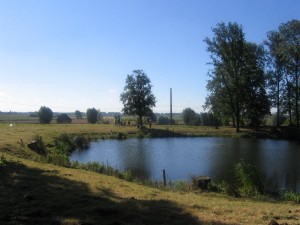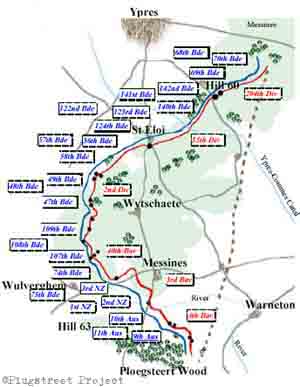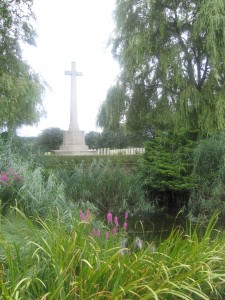Messines in Miniature Friday, June 17th, 2011
|
|
|
|
|
Readers of the latest edition of Military Times will be able to read an article by Martin about the model of Messines and its defences that was constructed by men of the New Zealand Rifle Brigade at their training camp on Cannock Chase (Staffordshire).
The model is made of cement and brickends and depicts the town and the German trenches defending it. The NZRB model is a copy of the tactical model of the wider battlefield created at Petit Pont. This example was used as a briefing tool for troops ahead of the Messines action and film shows the Australian 3rd Div studying it.
We believe we have identified the site of the model and hope to search for remains this summer.
|
|
|
|
|
|
Filed under: Uncategorized by
PlugStreetTeam
2 Comments »
|
|
94th Anniversary of the Battle of Messines Tuesday, June 7th, 2011
|
|
|
|
|
Ninety Four Years ago today the Allied forces launched the opening attack of the Battle of Messines. Many months of hard dangerous work by the Tunnelling Companies of the Royal Engineers along with careful planning and preparation by all involved led to a successful attack.
_
 Ultimo Crater, the result of the explosion of just one of the mines beneath the German Front Line.
_
The objective of the battle was to push back the enemy from a curving front line, which had barely moved since the trenches were established in the later stages of the Battle of Ypres in late summer of 1914. By straightening the front line between Ypres and Armentieres, the Allies gained control of the higher ground of the Messines Ridge, including the towns of Messines and Wytschaete and the infamous Hill 60, leaving them in a strong position for the planned Third Battle of Ypres, more commonly known as Passchendaele.
_
 Objectives of The Battle of Messines
_
This map shows the curving front line, with the objective shown in black dots.
Although the Battle was a success, many casualties were suffered on both sides. The tactic of exploding massive mines beneath the German front lines, inevitably caused thousands of deaths, and many more were injured or killed as the infantry advanced to capture objectives.
_
As the Team prepares for the 2011 field work, we remember on this day those who took part in the battle.
_
 The Cross of Sacrifice at Prowse Point
_
Please see our History Section for more details of the battle and those who fought in these fields.
|
|
|
|
|
|
Filed under: Great War History by
PlugStreetTeam
Add a Comment »
|
|